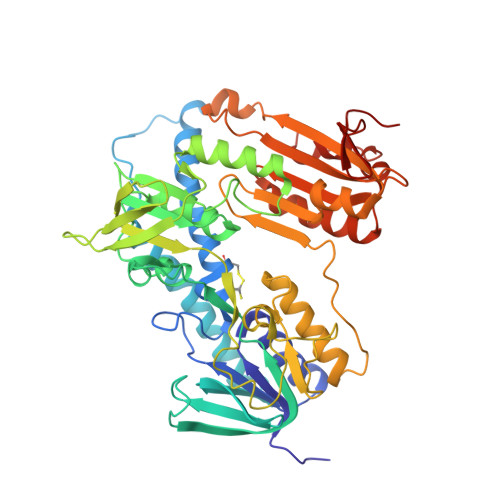Identification of 1,2,3-triazolium salt-based inhibitors of Leishmania infantum trypanothione disulfide reductase with enhanced antileishmanial potency in cellulo and increased selectivity.
de Lucio, H., Revuelto, A., Carriles, A.A., de Castro, S., Garcia-Gonzalez, S., Garcia-Soriano, J.C., Alcon-Calderon, M., Sanchez-Murcia, P.A., Hermoso, J.A., Gago, F., Camarasa, M.J., Jimenez-Ruiz, A., Velazquez, S.(2022) Eur J Med Chem 244: 114878-114878
- PubMed: 36332553
- DOI: https://doi.org/10.1016/j.ejmech.2022.114878
- Primary Citation of Related Structures:
6T95, 6T98 - PubMed Abstract:
N-methylation of the triazole moiety present in our recently described triazole-phenyl-thiazole dimerization disruptors of Leishmania infantum trypanothione disulfide reductase (LiTryR) led to a new class of potent inhibitors that target different binding sites on this enzyme. Subtle structural changes among representative library members modified their mechanism of action, switching from models of classical competitive inhibition to time-dependent mixed noncompetitive inhibition. X-ray crystallography and molecular modeling results provided a rationale for this distinct behavior. The remarkable potency and selectivity improvements, particularly against intracellular amastigotes, of the LiTryR dimerization disruptors 4c and 4d reveal that they could be exploited as leishmanicidal agents. Of note, L. infantum promastigotes treated with 4c significantly reduced their low-molecular-weight thiol content, thus providing additional evidence that LiTryR is the main target of this novel compound.
Organizational Affiliation:
Universidad de Alcalá, Departamento de Biología de Sistemas, 28805 Alcalá de Henares, Madrid, Spain.



















